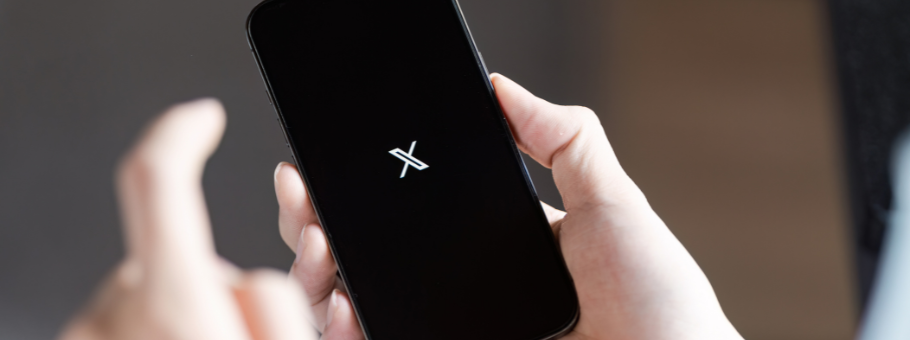From Tweets to X: The Untold History of Twitter’s Transformation

Imagine working a full-time job, only to spend your nights and weekends chasing a passion project with a few colleagues. What starts as a side hustle—born out of curiosity and creativity—slowly snowballs into a game-changing digital tool. That’s exactly how Twitter, now rebranded as X, evolved from a simple idea into one of the most impactful communication platforms of the 21st century.
How Twitter Got Its Start
Twitter’s roots trace back to 2006 when Jack Dorsey (@Jack) envisioned a simple SMS-based tool for sharing status updates. His idea was clear and direct: allow users to post short messages that let their friends know what they were doing—kind of like texting, but public and interactive.
The idea emerged during a brainstorming session at Odeo, a struggling podcasting startup co-founded by Evan Williams (@Ev). Dorsey pitched the concept to Williams and Biz Stone, who encouraged him to take it further. What began as a rough prototype would quickly outgrow its original scope.
Originally named “twttr,” the platform followed the tech trend of dropping vowels for a more distinctive domain name. Credit for the name goes to developer Noah Glass, who not only coined “twttr” but also pushed for the eventual name “Twitter.”
The First Tweet That Changed Everything
On March 21, 2006, Jack Dorsey posted the first-ever tweet: “just setting up my twttr.” That unassuming message would become a historical digital artifact. Fast-forward to 2021, and this tweet was sold as an NFT for a staggering $2.9 million—proof of the platform’s deep cultural and technological influence.
In Twitter’s early days, the development team racked up hefty SMS bills testing features. Meanwhile, Odeo’s core podcasting business was collapsing, especially after Apple launched its own podcast directory. The founders made a bold move: they bought back Odeo from investors, acquiring full rights to the Twitter prototype in the process.
This buyback gave Dorsey, Williams, Stone, and other key team members complete control over Twitter. However, not everyone was included in the transition—Noah Glass, one of the platform’s early champions, was notably left out, a decision that would stir controversy later.
To house the project, the team created the Obvious Corporation (@obviouscorp), establishing Twitter as an independent company with the freedom to scale.
The Growth Era: When Twitter Took Off
Twitter’s major breakthrough came during the 2007 South by Southwest (SXSW) Interactive festival. The team strategically promoted the platform to tech-savvy attendees, triggering a viral response—over 60,000 tweets were posted daily throughout the event. This exposure accelerated user adoption and established Twitter as a rising star in social media.
However, success came with challenges. The site suffered frequent outages, and users were often greeted by the now-iconic “Fail Whale,” an illustration by artist Yiying Lu (@YiyingLu) showing a cartoon whale being lifted by birds. The image became a meme and a symbol of Twitter’s growing pains.
Why Tweets Were Originally 140 Characters
One of Twitter’s defining features was its original 140-character limit. This wasn’t arbitrary—it mirrored the SMS character limit enforced by mobile carriers at the time. While the restriction initially helped Twitter stand out, it eventually felt outdated.
In 2017, Twitter doubled the character limit to 280. Despite some initial pushback, the change was well-received, allowing users to express themselves more clearly without having to split thoughts across multiple tweets. Even with the increase, most tweets remained short, averaging around 50 characters.
How Users Helped Shape Twitter
Many of Twitter’s most important features weren’t invented by the company—they came from users. Long before official replies existed, people used the “@” symbol to tag others. Hashtags and retweets also began as grassroots innovations. What started as informal behavior was later adopted as core platform functionality.
Users manually typed “RT” to reshare tweets with credit, a behavior that became so popular that Twitter officially added the retweet button in 2010. These user-driven changes helped mold Twitter into a flexible, user-centered social platform.
The Bot Problem: Rise of Fake Accounts
Despite its innovation, Twitter wasn’t without flaws. By 2020, researchers estimated that around 15% of all Twitter accounts were bots. These automated accounts often spread misinformation, inflate engagement metrics, and spam users—damaging trust and lowering the platform’s credibility.
Elon Musk’s Takeover and the Rebrand to X
In 2022, Elon Musk purchased Twitter for $44 billion after a high-profile, turbulent negotiation. Musk initially tried to exit the deal, citing concerns over fake accounts, but eventually closed the acquisition. What followed was a dramatic overhaul of the platform.
Musk rapidly laid off large portions of Twitter’s workforce, triggering instability. Technical issues became more common, moderation efforts weakened, and bot activity worsened. These changes sparked user backlash and led many to explore alternative platforms to Twitter.
One of Musk’s biggest moves was introducing Twitter Blue, a paid subscription offering features like editable tweets and prioritized visibility. However, tying the blue checkmark (previously reserved for verified users) to paid accounts backfired—leading to impersonations and misinformation.
As discontent grew, new platforms like Threads, Bluesky, and Hive Social began attracting Twitter refugees. Then in 2023, Musk announced that Twitter would be rebranded as “X,” retiring the iconic bird logo and signaling a broader vision for the platform’s future.
Twitter’s Legacy and the Future of Digital Communication
What began as a late-night side project powered by SMS morphed into a platform that revolutionized global communication. From breaking news and political discourse to memes and viral movements, Twitter left an indelible mark on the internet.
Now Twitter branded as X, the platform enters a new chapter—one filled with uncertainty but still shaped by user interaction and real-time dialogue. Its evolution reflects broader shifts in how we connect, share, and shape public conversations online.
For a deeper look into how platforms like X are changing the digital landscape, check out this guide to social media trends on Techy247—your hub for the latest insights in tech and communication.









